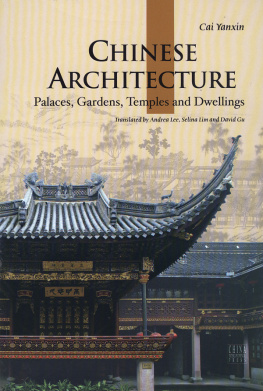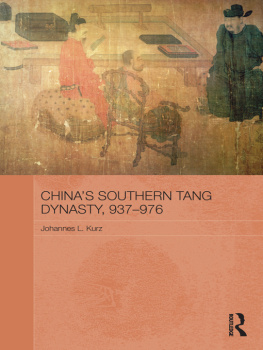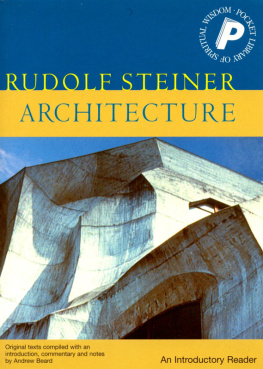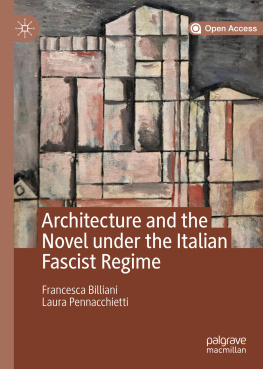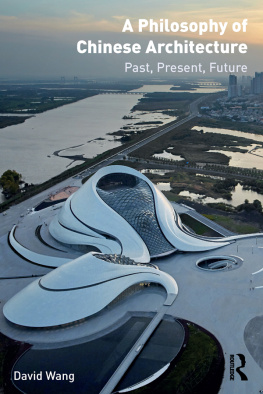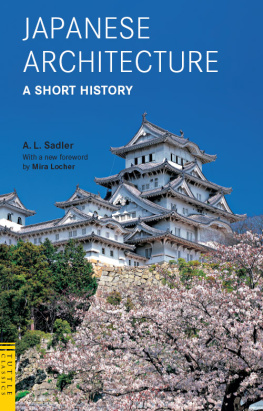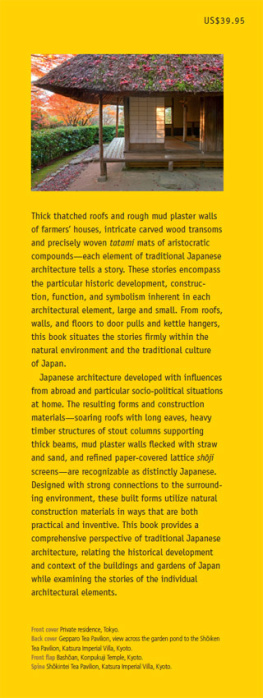
Traditional
Chinese Architecture
THE PRINCETON-CHINA SERIES
Daniel A. Bell, series editor
The Princeton-China Series aims to publish the works of contemporary Chinese scholars in the humanities, social sciences, and related fields. The goal is to bring the work of these important thinkers to a wider audience, foster an understanding of China on its own terms, and create new opportunities for cultural cross-pollination.
Traditional Chinese Architecture, by Fu Xinian, edited by Nancy S. Steinhardt, translated by Alexandra Harrer
Confucian Political Perfectionism: A Reconstruction for Modern Times, by Joseph Chan
Ancient Chinese Thought, Modern Chinese Power, by Yan Xuetong, translated by Edmund Ryden
A Confucian Constitutional Order: How Chinas Ancient Past Can Shape
Its Political Future, by Jiang Qing, edited by Daniel A. Bell
and Ruiping Fan, translated by Edmund Ryden
Traditional
Chinese Architecture

TWELVE ESSAYS
Fu Xinian
Edited by Nancy S. Steinhardt | Translated by Alexandra Harrer
PRINCETON UNIVERSITY PRESS
Princeton & Oxford
Copyright 2017 by Princeton University Press
Published by Princeton University Press, 41 William Street, Princeton, New Jersey 08540
In the United Kingdom: Princeton University Press, 6 Oxford Street, Woodstock, Oxfordshire OX20 1TR
press.princeton.edu
All Rights Reserved
ISBN 978-1-400-88513-8
Library of Congress Cataloging-in-Publication Data
Names: Fu, Xinian, author. | Harrer, Alexandra, translator. | Steinhardt,
Nancy Shatzman, editor.
Title: Traditional Chinese architecture : twelve essays / Fu Xinian ; edited
by Nancy S. Steinhardt ; translated by Alexandra Harrer.
Description: Princeton, New Jersey : Princeton University Press, 2017. |
Series: The Princeton-China series | Includes bibliographical references
and index.
Identifiers: LCCN 2016050184 | ISBN 9780691159997 (hardback)
Subjects: LCSH: ArchitectureChina. | BISAC: ARCHITECTURE / History /
General. | ARCHITECTURE / Buildings / General. | ART / Asian. |
ARCHITECTURE / Regional. | ARCHITECTURE / Individual Architects & Firms /
General.
Classification: LCC NA1540 .F82513 2017 | DDC 720.951dc23 LC record available at https://lccn.loc.gov/2016050184
British Library Cataloging-in-Publication Data is available
This book has been composed in Garamond Premier Pro and Ideal Sans
Printed on acid-free paper.
Printed in the United States of America
1 3 5 7 9 10 8 6 4 2

ILLUSTRATIONS

PREFACE
When Princeton University Press approached me in 2011 about the possible addition of a title on Chinese architecture in the Princeton-China series of translations by leading Chinese scholars, I could not have been more enthusiastic. The inquiry meant that a field that until the late twentieth century was represented by only a handful of reliable books in English, and that was not taught at the majority of premier North American universities, had captured the attention of those involved in the series both in China and at the press. Here was an opportunity to present in English a more sophisticated understanding of Chinese architecture than any currently available. The goal of everyone involved in this book at every stage has been to take Chinese architecture beyond the introductory level. Through explication of building principles and explanation of the most important intricacies and nuances, this book seeks to open the field of Chinese architecture to English readership in a way that until now has been possible only for readers of Chinese.
Within a few minutes of the initial inquiry, I replied that Fu Xinian was the only choice for author. I selected him for his unparalleled range of research topics, synthetic mind, unique drawings, and place in China in the history of the architecture field. Fu comprises this agenda because of his scholarship as well as because he is a member of the group Chinese architectural historians call the Second Generation. Fu was a student of the founders of the modern field of Chinese architecture in China, the First Generation, most of whom were trained outside China and whose careers included scholarship in textual sources, teaching, design, field work, and historic preservation. Fu, too, was trained in all these disciplines, in his case during the tumultuous years of political upheaval of Nationalist and Communist governments, revolutionary movements, and purges, including the Cultural Revolution. Still, he taught Chinas Third Generation, transmitting the model of architecthistoriantextual researcherfield researcherpreservationist to a group young enough to study abroad when the opportunity occurred beginning in the 1980s. Fu Xinian has been abroad, but he has studied and taught only in China. Fu and his students are the teachers of Chinas Fourth Generation of architectural historians and architects.
Although he writes exclusively in Chinese, Fu Xinian has been known in the West since his lead essay for Chinese Traditional Architecture was translated for the exhibition and catalogue of this title at China Institute in 1984. In 1987 I had a chance to have long conversations with Fu when he came to the University of Pennsylvania for a conference on Chinese architecture. I had the opportunity to work under his guidance from 1991 to 2002 during the production of Chinese Architecture, a consolidation of the five-volume Zhongguo gudai jianzhushi (History of traditional Chinese architecture), of which Fu wrote the second volume, on the period of the third through tenth centuries. Since then, Fu Xinian has been as generous with his time and tutelage to my students as he has to me. One of those students is Alexandra Harrer, now an assistant professor in the School of Architecture at Tsinghua University, the department founded by Fus teacher Liang Sicheng and where Fu Xinian studied and taught. Of the many components required for the success of a book like this, we knew from the first conversation at Princeton University Press that a superb translator who reads Chinese architectural literature with a nuanced understanding, is an architect, and has taught the subject was required. Alexandra Harrer fits this profile, and Fu Xinian has made himself available to her for questions throughout this five-year process. He and the entire department at Tsinghua, as well as colleagues at Beijing University and Southeast University in Nanjing, have generously answered questions at every stage. They have been especially helpful with the glossary, which we hope will become the standard set of translations of Chinese architectural terms used in this book.
The idea of a book on architecture in the translations series was brought to Princeton University Press by series editor Daniel Bell. All of us involved thank him for his foresight. At Princeton University Press, editor Rob Tempio, his assistant Ryan Mulligan, illustrations manager Dimitri Karetnikov, and director Peter Dougherty have supported this book and its illustrations throughout the process and particularly at every crucial stage. More recently, my gratitude goes to the superb copyeditor Anita OBrien and oversight of Karen Carter. Finally, I thank Sijie Ren, a Penn graduate student and now postdoc at Southeast University, who proofread the manuscript in its final version and assisted in preparing the drawings for publication, and my colleague Paul Goldin, for important corrections to the glossary. But first and foremost, Fu Xinian is responsible for what follows. It is to him that this book is humbly dedicated.


